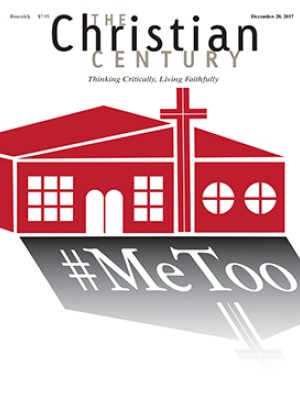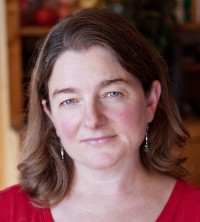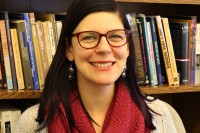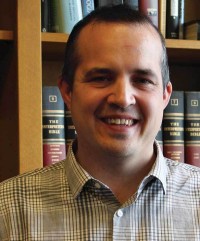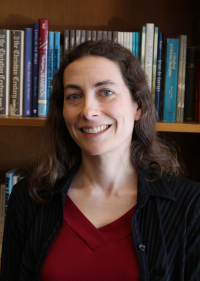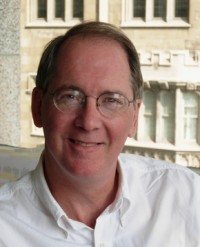Some bright spots in 2017
A year after the election, we decided to look for signs of hope. We found them all around us.
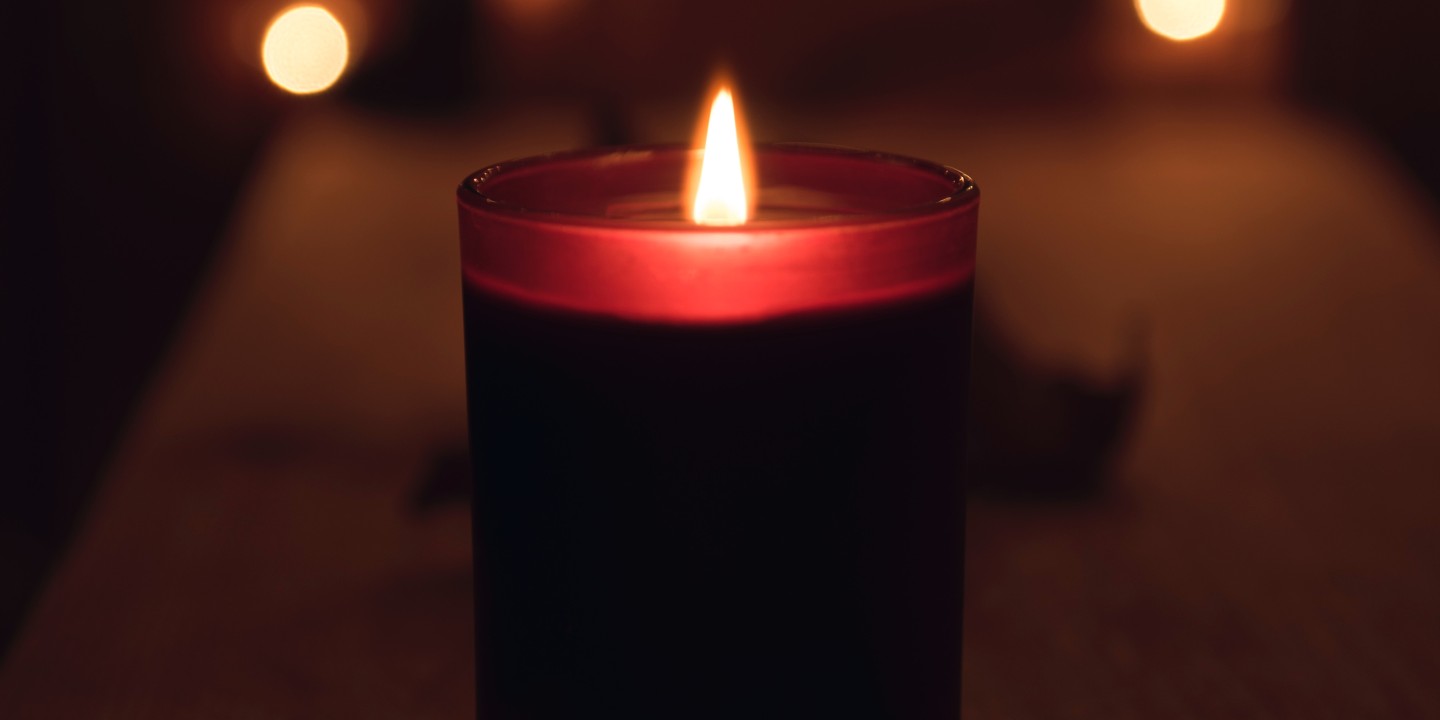
Year-end news roundups usually focus on catastrophes and worrisome trends. For this last issue of the year, we offer a personalized roundup of encouraging trends—brief reports on people and projects that have inspired hope in us.
Bridging the divide: After the 2016 election, it hit me hard when I realized that the secretary at my son’s school voted for Donald Trump because she honestly believed that Hillary Clinton wanted to take away her guns. What I thought was a bizarre and exaggerated political claim was, for her, a true statement. But she and I had never talked about it, and it was hard to envision an environment in which we might.
Since then, I have been inspired to learn about the number and variety of people and organizations who have been trying to foster that kind of conversation. Hi from the Other Side, created by two graduate students in Boston, arranges phone calls between people from opposite sides of the political spectrum. The People’s Supper has organized more than 500 “bridging” and “healing” suppers. Living Room Conversations has been connecting people through Skype and in person. The Listen First project has held private retreats on democracy and power, trying to reshape political discourse. Shop Talk Live founder Theo Wilson has used a barber shop in Denver to foster in-person conversations. Many of these organizations are using the principles developed by Parker Palmer and the Center for Courage and Renewal on how to hold a constructive conversation. There’s a People’s Supper under way in my own community. I think I will invite the school secretary. —Amy Frykholm
Read our latest issue or browse back issues.
Wages for workers: I got hooked by the message of Fight for $15, a national campaign advocating $15 an hour for people working fast food and retail jobs, at an event I attended a few years ago. A photograph on display featured a worker holding a sign that said, “I am worth more.” In the campaign’s five years of putting pressure on cities and large companies, it has had many victories. A recent success came in September when Target announced plans to raise its minimum wage to $11 an hour—including for the people it hires for the holidays—and to $15 an hour by 2020, boosting the livelihoods of its more than 320,000 employees. In November, Montgomery County, Maryland, raised its minimum wage to $15.
The movement combines concerns about immigrant rights, racial justice, wealth disparities, women’s rights, and more. Ending poverty is essential to addressing all of these issues and for building a better society. Fight for $15 gives me hope that workers can be paid closer to what they are worth. —Celeste Kennel-Shank
Assault has consequences: If 2016 taught us that sexual assault allegations aren’t a deal breaker for American voters, 2017 affirmed that the consequences for such behavior are nonetheless growing more serious in other spheres. One after another, prominent men have been publicly accused of assault and harassment as more survivors bravely step forward. Several of these men have seen their career opportunities evaporate.
I was particularly struck by the reaction to allegations against Kevin Spacey. Netflix promptly fired the actor from its flagship series House of Cards, along with canceling an upcoming film in postproduction. Another movie replaced Spacey in a supporting role—a month before its release, long after his scenes were shot. It’s hard to imagine such an unequivocal, expensive response from the entertainment industry even a few short years ago.
Yes, these decisions were no doubt financially motivated. But so were past decisions to look the other way, to trust that the public loved a star enough to ignore his sins—or to punish those he sinned against for daring to bring it up. That public, and thus that financial calculus, seems to be changing—not everywhere, and not soon enough, yet in real and hope-filled ways. —Steve Thorngate
LGBTQ church camp: On an island in Bay Lake, north of Minneapolis, high school students from across the country gather for a week of summer camp. Sponsored by the Naming Project, a nonprofit organization, this camp is for LGBTQ teens and allies who are looking to have honest conversations about faith and issues of sexual orientation and gender identity.
Founded by a Lutheran minister, the camp helps teenagers deepen their sense of identity as people of faith while living fully into bodies that may not fit into the boxes prescribed by culture and church. The Naming Project provides these teens with “a safe and sacred space where youth of all sexual orientations and gender identities are named and claimed by a loving God; can explore and share faith; experience healthy and life-giving community; reach out to others; and advocate for systemic change in church and society.” The campers roast marshmallows around campfires, share stories of faith, stage a cabaret talent show, worship, swim in the lake, and study the Bible. They do all of this as God’s beautiful and beloved children, affirmed in the knowledge that they reflect God’s image. —Elizabeth Palmer
Mothers on the street: Chicago has often seemed paralyzed in the face of the spike in gun violence of the past few years—mounting a comprehensive plan of action seems beyond leaders’ capacity—but some people in the city have stepped up. One group is Mothers Against Senseless Killing, inspired by the simple idea that mothers standing on street corners, keeping an eye on things, are a powerful deterrent. The founder of MASK, Tamar Manasseh, encourages mothers to set out some lawn chairs and just sit with their friends, perhaps grill some hot dogs and organize some games in a vacant lot.
Manasseh knows that much more than a visible presence is needed: there’s a great need for neighborhood investment in education and jobs. But she’s convinced the women’s presence on the streets—often wearing pink T-shirts reading “Moms on patrol”—has had a ripple effect, extending to the surrounding blocks. And no expertise is needed. “I just sit on a corner and hang out with my friends,” she says. “Anybody can do it.” —David Heim
Genius for others: It’s not easy to test for lead contamination in a home water system. You can pick up a test kit at the local home improvement store, but you still have to pay to send off the sample to a certified lab capable of running the right tests.
That may change thanks to an inventive 11-year-old who became appalled by the water contamination crisis in Flint, Michigan. Worried that this tragedy could occur elsewhere, Gitanjali Rao went to work. She set up a lab in her Colorado home and experimented for months on end. Her singular goal was to devise a portable detection device that could identify lead compounds in water.
Using carbon nanotubes to detect changes in the flow of electrons, a signal processor with a Bluetooth attachment, and a smartphone app to display the test results, Rao came up with a device that overwhelmed the judges at the Discovery Education 3M Young Scientist Challenge. They named her “America’s Top Young Scientist.”
Not many seventh graders are brainy enough to even know what a chemically treated carbon nanotube is. How beautiful that one of those who does would have the wild dream of saving other lives through a device of her own design. —Peter W. Marty
Urban river: I love rivers. Some are easier to love than others. When I lived right by the Chicago River, I spent time alongside it every chance I got. But the general nastiness of the water was plain to see and smell. The idea of an urban riverfront was a lot lovelier than the reality.
The reality, however, has been catching up. For years, local government and volunteers have been cleaning up the river by removing trash, redirecting storm sewer overflow, and treating wastewater. They’ve made great progress, and this summer several elected officials did something unheard of: they jumped in the river, on purpose, for a publicity-stunt swim.
The restoration of polluted waterways can be seen as part of a larger movement to make cities more hospitable to humans, not just businesses and cars. Expanded green spaces, new walkways and bike paths, decommissioned freeways—all these give me hope that we’re beginning to learn (or remember) that urban density doesn’t have to mean estrangement from the earth and water that sustain us. —ST
Holistic well-being: Trinity United Church of Christ’s Imani Village project on Chicago’s South Side buoys my hope in so many ways. The church has broken ground on a 27-acre site near its sanctuary for multipurpose community development. The holistic vision includes a five-acre farm providing training for green jobs for people who have been released from prison, as well as residential housing for seniors and a primary care clinic. This is on top of the work the church already does with a farmers’ market, organic garden, and more.
I spent several years working as a chaplain at low-income hospitals, including one relatively close to Trinity UCC. And I currently serve with a garden ministry in a city neighborhood with limited access to fresh produce. In these settings it is clear how the issues Imani Village seeks to address are intertwined.
It is thrilling to learn about the efforts of Monica Brown Moss, Trinity’s village wellness coordinator, Otis Moss III, Trinity’s pastor, and their community to foster health, well-being, and justice. —CKS
From refugee to mayor: Last year I traveled to Missoula, Montana, to study how a group called Soft Landing Missoula was welcoming refugees to that community. I was impressed both by the refugees who were arriving from all over the world and by the people who were arranging a welcome for them. But they were facing a considerable amount of hostility from outside Missoula, and when Donald Trump announced that the number of refugees coming to the United States would drop by more than 50,000, it seemed like the rhetoric of xenophobia was winning—in Montana and elsewhere.
However, last month onetime refugee Wilmot Collins was elected mayor of Helena. Collins came to the United States in 1994 from Liberia. He campaigned for mayor by going door-to-door, connecting with voters on the need for low-income housing and funding for first responders. His message resonated, and Collins beat the four-term incumbent to become the first black mayor of Helena since 1873. —AF
Jobs for returning citizens: There’s been a restaurant in my Chicago suburb for the past few years called Felony Franks. It has exclusively employed former prisoners and taught its workers all sides of the restaurant business—accounting, dealing with vendors, and managing a store. The project calls on professionals in the community to help with the training.
The results have been impressive. The recidivism rate of these ex-offenders is close to zero. (Nationally, about half of those released from prison are back in jail within three years—and a chief reason is that they can’t get a job.) About half have been able to move on to other jobs.
As the name suggests, Felony Franks does not try to hide what it’s doing. It has educated people in the community about the challenges returning citizens face (a criminal record is often a guarantee that no employer will even interview you), and it has educated employers about the kinds of support ex-offenders need. Above all, it has shown that returning citizens are, when given a chance, extraordinarily motivated workers. —DH
Being curious and kind: Celeste Ng’s six-year-old son has a soft and kind heart—it’s “huge,” according to Mom. This little guy is so sensitive that he skips over the pages in children’s books where someone gets hurt. He retreats when faced with trouble. Ng knows she can’t give him a thick and leathery shell for protection, even if she wants to on certain days. She’s also aware that fear has a way of convincing us that hardness is somehow good. Fear prompts people to hide their vulnerability inside shells and behind walls.
Ng tells her boy of the good things that shells and walls keep out, reminding him of their family motto: “Be kind, be curious, be helpful.” The boy can’t figure out why curious is in the mix. “Because being curious,” says Mom, “is admitting that you don’t know, but also that you want to know. . . . that people you don’t know are worth knowing, that they have something to teach you. That learning about them—that encountering new ideas—doesn’t threaten you, it enriches you. . . . That you approach the world as a trove of things to take in, rather than things you frantically, fearfully wall out.” —PWM
Diversity welcomed: Skokie, Illinois, where I live, is plastered with colorful lawn signs that read “Skokie welcomes everyone.” A nonprofit organization called SkokieCares created the signs after some residents were yelled at for wearing hijabs and told to go back to their own countries. The signs are given out at a number of common locations, including the village hall and the library. They flank the downtown streets, and they’re a part of the landscaping in people’s front yards.
SkokieCares doesn’t just give out lawn signs—it also helps people find volunteer opportunities and meet to talk about privilege, power, and oppression. But the lawn signs function for me as visible signs of hope in a community that—despite its remarkable diversity—contains much of the kind of anger that drives our politically fractious society. Paul Tillich defined a symbol as something that participates in that to which it points. In this sense, the “Skokie welcomes everyone” signs are a symbol of how we can live well with one another across differences—and in saying that we welcome everyone, we begin to live out that welcome. —EP
A version of this article appears in the December 20 print edition under the title “12 signs of hope.”


